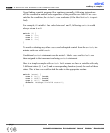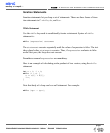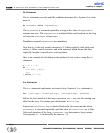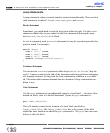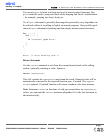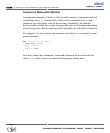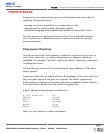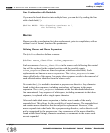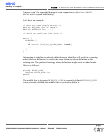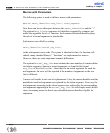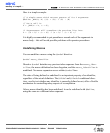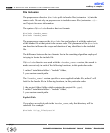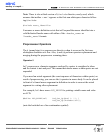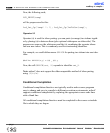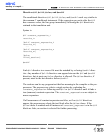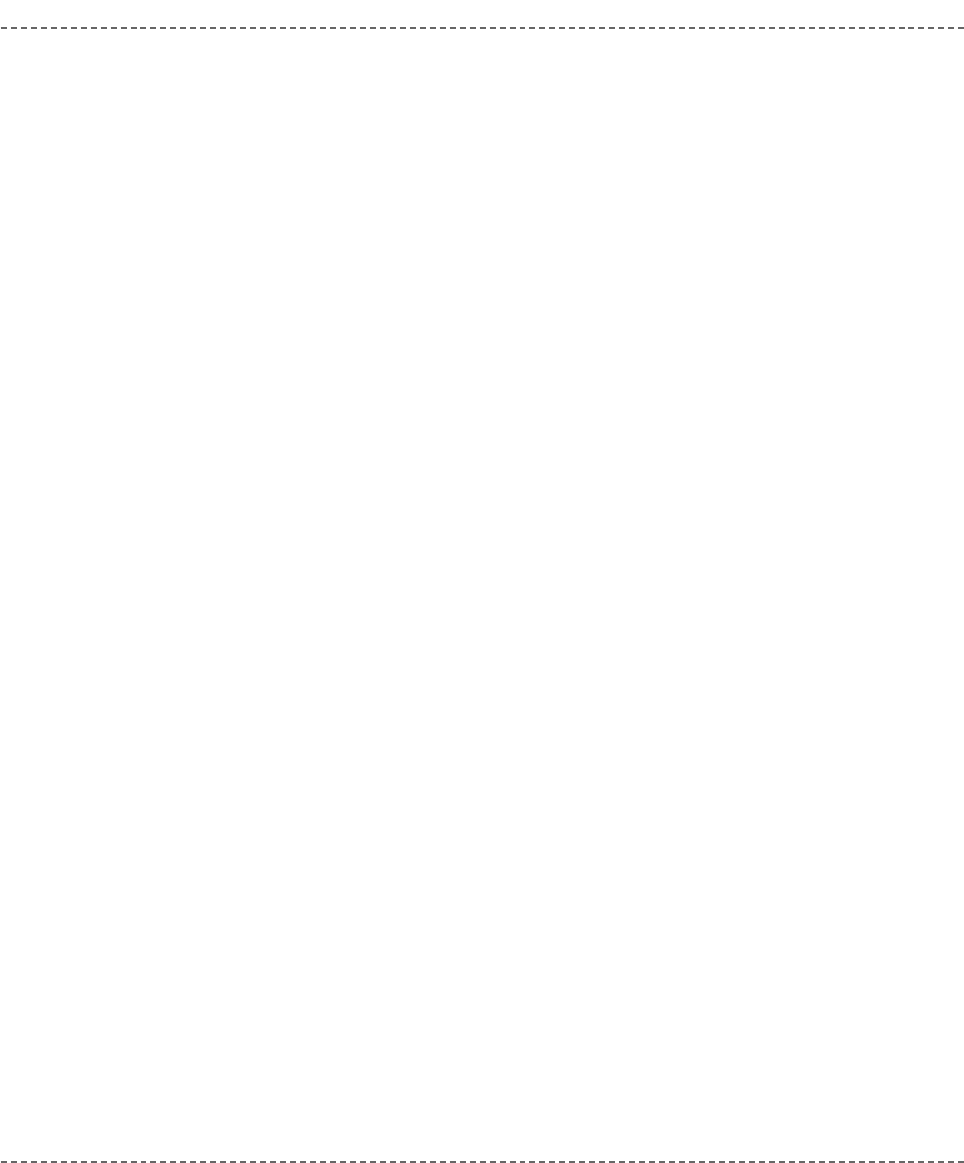
Line Continuation with Backslash
If you need to break directive into multiple lines, you can do it by ending the line
with a backslash (
\):
#define MACRO This directive continues to \
the following line.
Macros
Macros provide a mechanism for token replacement, prior to compilation, with or
without a set of formal, function-like parameters.
Defining Macros and Macro Expansions
The
#define directive defines a macro:
#define
macro_identifier <token_sequence>
Each occurrence of
macro_identifier
in the source code following this control
line will be replaced in the original position with the possibly empty
token_sequence (there are some exceptions, which are noted later). Such
replacements are known as macro expansions. The
token_sequence
is some-
times called body of the macro. An empty token sequence results in the removal of
each affected macro identifier from the source code.
No semicolon (
;) is needed to terminate a preprocessor directive. Any character
found in the token sequence, including semicolons, will appear in the macro
expansion. The
token_sequence terminates at the first non-backslashed new
line encountered. Any sequence of whitespace, including comments in the token
sequence, is replaced with a single-space character.
After each individual macro expansion, a further scan is made of the newly
expanded text. This allows for the possibility of nested macros: The expanded text
can contain macro identifiers that are subject to replacement. However, if the
macro expands into what looks like a preprocessing directive, such a directive will
not be recognized by the preprocessor. Any occurrences of the macro identifier
found within literal strings, character constants, or comments in the source code
are not expanded
mikroC
- C Compiler for Microchip PIC microcontrollers
mikroC
making it simple...
12 6
MikroElektronika:
Development
tools
-
Books
-
Compilers
page



